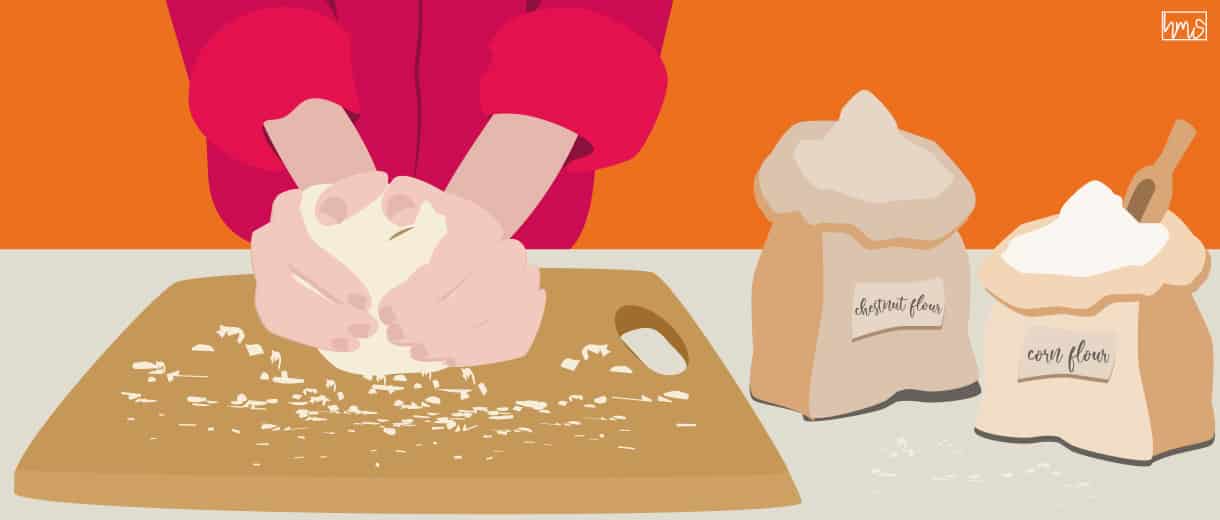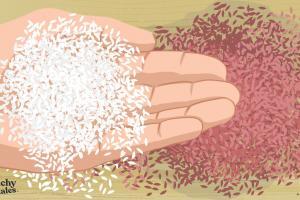The New Era Of Baking: Experimenting With Alternative Flours
With the recent worldwide pandemic and everyone confined to their homes, there has been an incredible boom in baking. People all over the globe are making bread, muffins, cakes, pastries and cookies, returning to our grandparents’ epoch. This is a great fad, as home-made goods are certainly fresher and healthier than the packaged ones we normally buy at the supermarket. The only problem is, regular wheat flour has become a true scarcity. CrunchyTales collected some tips on how to replace wheat flour with alternative flours that are easier to find and provide great twists in both texture and taste. They are also the perfect choice for those who have problems with digesting gluten. Another good news is, you can easily make them yourself from ingredients such as nuts, beans, oats, almonds and rice that are sitting in your pantry.
Health benefits of alternative flours
Apart from the recent scarcity of wheat flour on the shelves of supermarkets, you should avoid using it also to safeguard your health. Refined white flour has very few natural vitamins and minerals left, as most of the nutritive qualities have been stripped away during the refining process. Preservatives and sweeteners such as corn syrup are often added to the mix to prolong shelf life and to add taste. Consuming excess amounts of white flour may increase the risk of high blood pressure, obesity, diabetes and high cholesterol. It can also suppress your immune system and even contribute to the development of mental disorders such as depression and anxiety. There are studies that demonstrate these negative health effects, especially for women. So why not experiment with some healthier alternatives that also offer new tastes and consistencies?
Nutty, hearty pastries with chestnut flour
Chestnut flour has been known for centuries as farina dolce (sweet flour) and is the key ingredient in some traditional Italian recipes like castagnaccio and marocca. Chestnuts are high in carbohydrates, low in fats, and have no cholesterol. You can use chestnut flour when making crepes, pancakes and cakes. You can also substitute up to 20 per cent of regular flour in any recipe to add a light sweetness, heartiness and a nutty taste to baked goods. You can experiment with chestnut flour with one of these recipes.
Chestnut flour is a gluten-free option with vitamin B, iron, folate and fibre. Researchers found that mixing it with rice flour, another gluten-free option, in a 30/70 ratio, makes the best bread -reveals Beth Warren, RDN and founder of Beth Warren Nutrition-. It adds more nutrition to a blend than rice flour alone.
Gluten-free goodies using almond flour
Almond flour is produced by blanching almonds in boiling water to remove the skin, then grinding and sifting them to a fine, floury texture. This flour is low in carbohydrates and high in healthy fats and fibre.
Because almonds have a rich source of nutrients, like vitamin e and calcium, almond flour is a healthy choice – says Warren-. It’s also gluten-free making it a safe choice for people with Celiac disease or gluten intolerance. The flavour of this flour in baking can also give recipes a unique taste versus traditional flour.
To replace wheat flour with almond flour, start by replacing the flours 1:1, however, remember to add more of a raising agent like baking powder or baking soda to accommodate the heavier weight of the almond flour. You can also add elements like rice flour, bananas or peanut butter to add structure to the dough. Almond flour adds excellent flavour and is commonly used with other flours in cakes and cookies. Try out some of these fabulous recipes for your almond-tasting baked goodies.
A taste of coconut in your baked goods
Coconut flour is made with dried and grounded coconut pulp. Similar to almond and chestnut flour, it has a rather strong flavour. One of the best things about coconut flour is that it is full of fibre, protein and healthy fats while being gluten and grain-free. The extra nutrients will make your recipes deliciously filling, and you’ll find that you won’t have to use as much sweetener because of the natural sweetness in coconut flour. It is great for muffins, bread and pancakes and there are loads of recipes to try out. Coconut flour soaks up a lot of moisture, so make sure to respect the amounts of liquids in the recipes.
Coconut flour is low carb and high in fibre which makes it a great option for paleo or keto followers. It’s not actually a nut, so it’s a safe bet for those with nut allergies -Beth Warren says-. In baking, the rule of thumb is to substitute only 20 per cent of coconut for wheat flour. The taste of the coconut is mild and blends in well once combined with other ingredients when baking.
Delicious sweets with rice flour
Rice flour is a common substitute for wheat flour. It is made with finely ground rice and can be found in both brown and white varieties, depending on whether whole grain or white rice was used. Rice flour is also used as a thickening agent in recipes that are refrigerated or frozen since it inhibits liquid separation.
Rice flour can be used to make confections like cakes, macaroons, buns and biscuits due to the silkier texture and subtle flavour it lends the finished products, advises Alice Medrich in Gluten-Free Flavor Flours: A New Way to Bake with Non-Wheat Flours. Experiment with some of these yummy rice flour recipes!
Tasty cakes using corn flour
Corn flour is milled from dried whole corn kernels, not to be confused with corn starch. Corn flour is usually yellow, but it can also be white or blue depending on the variety of corn it uses. The texture is fine and smooth, similar to whole wheat flour. Corn flour gives structure to baked goods and it is often combined with a binder like eggs to provide shape. It is extremely versatile, and you can incorporate it into recipes for bread, muffins, waffles, pancakes, battered and fried foods, blinis, and more.
Baking with alternative flours such as chestnut flour opened a whole new feast of flavours, textures and colours that I never knew existed – writes Alanna Taylor-Tobin in her book Alternative Baker. – Many of the alternative flours are rather perishable, so you should store them in the fridge. You can also replace wheat flour with spelt, tapioca, potato, peanut, hazelnut and many other types of alternative flours while baking. Experiment with different textures and flavours and find your own favourites.
Like this article? Sign up to our newsletter to get more articles like this delivered straight to your inbox.




